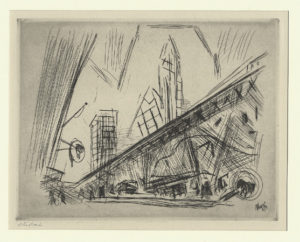Here I am, finally. I’ve been talking about starting an arts blog for the past couple of years, but I never got up the nerve to do the dirty work (i.e., the computer-geek stuff). So when artsjournal.com kindly offered to do it for me, it took me about three seconds to say yes.
If you already know my stuff, “About Last Night” will be familiar to you. It’s a daily offshoot of “Second City,” the monthly column I write for the Washington Post about the arts in New York City. (To read my last Post column, go here.) I’ll report on out-of-town events from time to time–I see a lot of things in Washington–but I plan to concentrate on New York City, the place where I live and where I spend most of my spare time going to theaters, concert halls, art galleries, and nightclubs. I can’t think of a better place in the world from which to write a blog like this, though I do get arted out every once in a while. (You’ll hear about that, too.)
“Second City” deals only with the performing and visual arts, whereas “About Last Night” will also cover books, film, and television, as well as offering commentary on what other people write about the arts. But the premise is still pretty much the same: this is the diary of a working critic who happens to cover all the arts, not just one or two.
Why a blog? I take intense pleasure from every kind of art there is–music, dance, literature, theater, paintings and sculpture, movies and TV. So can you. That’s why I’m writing “About Last Night.” I want to encourage you to follow your curiosity wherever it leads you, the same way I do. I believe deeply that all art is one, and that all the arts are accessible to everyone. I hope you’ll treat this blog as a daily opportunity to widen your horizons.
You can access this blog two ways, by going directly to my URL or visiting my host, artsjournal.com. If you came here the first way, click on the artsjournal logo at the top of the page and look at the rest of the site–I read it every morning, and so should you.
One last thing: please tell your friends about “About Last Night.” While you’re at it, tell me what you think of it. I long for your e-mail, and plan to post it regularly.
Welcome aboard.

 I never thought I’d be able to afford a Marin, but this one is a fluke, reprinted in 1924 in a special edition of 500 copies as a premium for New Republic subscribers, meaning that surviving impressions are comparatively easy to find and thus a hell of a lot less expensive. I’ve been trying to imagine a modern-day counterpart of such an offer, without much success. (Perhaps O could offer its subscribers tubes of Vaseline signed by Matthew Barney?)
I never thought I’d be able to afford a Marin, but this one is a fluke, reprinted in 1924 in a special edition of 500 copies as a premium for New Republic subscribers, meaning that surviving impressions are comparatively easy to find and thus a hell of a lot less expensive. I’ve been trying to imagine a modern-day counterpart of such an offer, without much success. (Perhaps O could offer its subscribers tubes of Vaseline signed by Matthew Barney?)